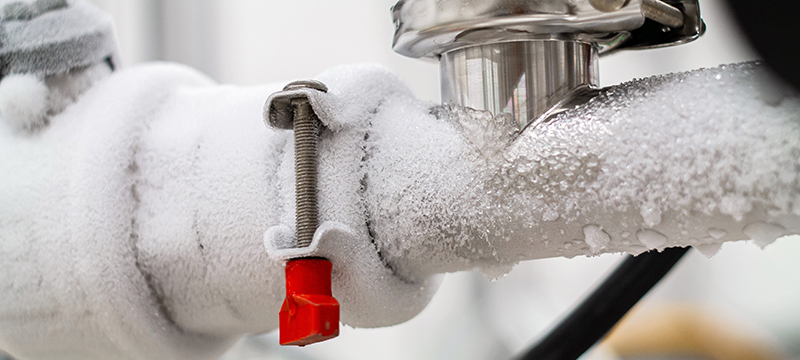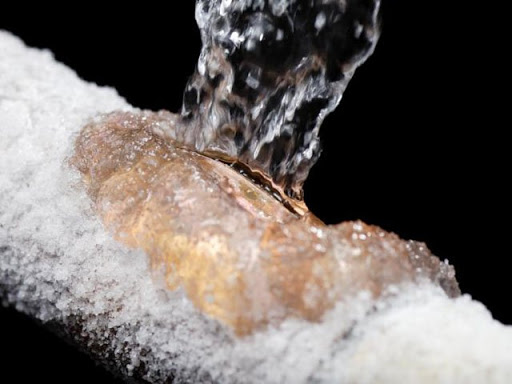5 Practical Hacks for Winterizing Your Home's Plumbing Against Severe Cold
5 Practical Hacks for Winterizing Your Home's Plumbing Against Severe Cold
Blog Article
We have stumbled upon this post pertaining to Prevent Freezing and Bursting Pipes down the page on the web and figured it made good sense to relate it with you on this site.

All home owners who stay in warm environments must do their ideal to winterize their pipes. It is something you have to do during autumn before deep wintertime truly starts. Failing to do so can spell calamity like frozen, fractured, or burst pipelines. If the climate exterior is shocking, right here are some convenient winterizing hacks to maintain your plumbing system shielded also.
Switch on the Faucets
When the temperature level decreases and it seems as if the cold temperature level will certainly last, it will certainly aid to activate your water both inside as well as outdoors. This will keep the water streaming via your plumbing systems. On top of that, the activity will certainly slow down the freezing procedure. Notably, there's no need to transform it on full force. You'll wind up losing gallons of water this way. Rather, aim for concerning 5 drops per minute.
Open Cabinet Doors Hiding Plumbing
When it's cool outside, it would be valuable to open cupboard doors that are masking your pipes. For instance, they could be somewhere in your kitchen or restroom. This will allow the cozy air from your heating unit to circulate there. As a result, you stop these exposed pipelines from cold. Doing this small method can keep your pipelines cozy as well as limit the possibly dangerous results of freezing temperature levels.
Require Time to Wrap Exposed Water Lines
One very easy as well as cool hack to warm up frigid pipes is to cover them with cozy towels. You can likewise use pre-soaked towels in hot water, simply do not fail to remember to put on safety handwear covers to guard your hands from the heat.
Try a Hair Dryer or Warmth Weapon
When your pipes are nearly freezing, your dependable hair dryer or warmth weapon is a blessing. If the warm towels do not help displace any resolving ice in your pipes, bowling hot air straight right into them might help. Do not use various other items that create direct flames like a strike torch. This can result in a larger disaster that you can not regulate. You might wind up harmful your pipes while trying to thaw the ice. And over time, you may even end up burning your residence. So be cautious!
When Pipes are Frozen, close Off Water
Shut off the major water valve immediately if you observe that your pipes are totally frozen or practically nearing that phase. You will normally discover this in your basement or utility room near the heater or the front wall closest to the street. Turn it off as soon as possible to avoid additional damage.
With more water, more ice will stack up, which will ultimately lead to rupture pipes. If you are uncertain about the state of your pipes this winter, it is best to call a specialist plumber for an examination.
All homeowners who live in temperate climates need to do their finest to winterize their pipes. Failure to do so can mean catastrophe like frozen, broken, or burst pipes. If the warm towels do not aid dislodge any kind of resolving ice in your pipelines, bowling hot air directly right into them might aid. Turn off the major water valve promptly if you notice that your pipelines are entirely icy or almost nearing that phase. With even more water, even more ice will certainly load up, which will at some point lead to rupture pipelines.
PREVENT YOUR PIPES FROM FREEZING THIS WINTER
A Leading Cause of Property Damage
When the weather is taking a deep nose dive into the cold dreary days, the risk of your pipes freezing and potentially bursting skyrockets. Unfortunately, during these cold dreary months, burst pipes are the most common denominator for property damage. The pipes that are most at the risk are those that are in areas where it is most cold in your home. For instance, pipes located in interior places such as basements, attics, and your garage. Unfortunately, that doesn’t mean that the pipes running through your cabinets or exterior walls can’t freeze. Good news, however, is that you can do things to help prevent pipes from freezing.
How to Prevent Pipes From Freezing
Once the temperature starts to drop during the winter, you should be taking the proper measures needed to ensure that your pipes stay warm and that there is circulation of water through them. Some steps that experts may recommend could go against your better judgement when it comes to saving water and heat. However, it would go without saying that when expenses are compared, damaged pipes could put a bigger dent in your wallet than a water bill.
What Can I Do?
Keep your garage door closed. This is very important, especially if you have water supply lines running through your garage. Open your kitchen and bathroom cabinets to allow warm air to circulate through them. Allow air circulation throughout your home. Keeping the interior doors open will once again allow the warm air to circulate inside your home. Ensure your thermostat is running the same temperature throughout the night and day. If you plan to be away from home during the cold months, set your temperature no lower than 55° F. This should provide enough heat to keep the pipes warm and prevent any remaining water inside the pipes from freezing. For more of a long-term solution, add insulation to attics, basement, and other crawl spaces around your home. By allowing your faucet to drip, it will alleviate pressure in the system. This is important because the pressure that is created between the blockage and the faucet can potentially cause the pipes to burst. Allowing the faucet to drip will prevent the pressure from building up, therefore keeping the pipes from bursting. Seal any cracks, openings, and crawl spaces around your home to prevent cold air from coming inside. This keeps your pipes-not to mention your home-warmer and less susceptible to issues caused by freezing temperatures. For the pipes in your home that are easily accessible, applying electrical tape to them might prevent them from freezing over. This is a quick fix, as you can apply the tape directly to the pipe. There are two options for heating tapes. One turns on and off by itself when it senses heat is needed. The other type of heating tape needs to be applied when heat is needed and removed when not necessary. If you have exposed pipes in your home, you can check this website to take a look at a few options that would be available at a shop near you.

As a devoted reader about Winterizing Your Pipes, I figured sharing that article post was sensible. Please set aside a second to distribute this page if you enjoyed reading it. Kudos for your time. Don't hesitate to come by our website back soon.
Schedule An Appointment Report this page